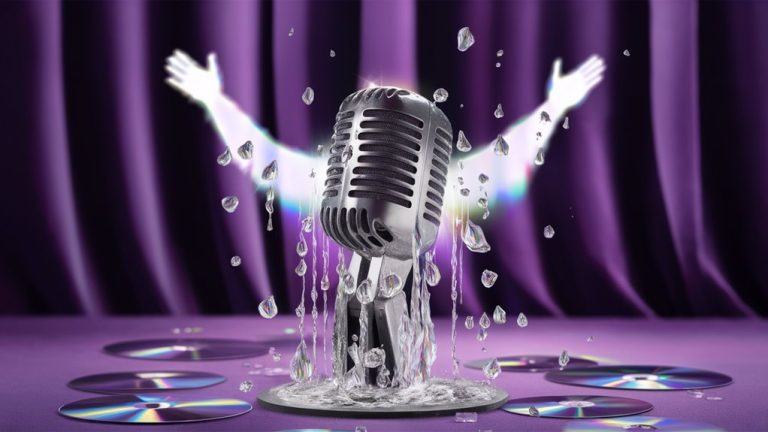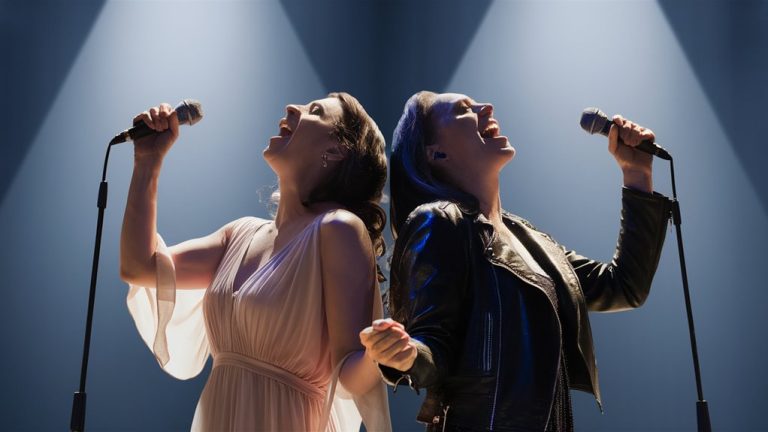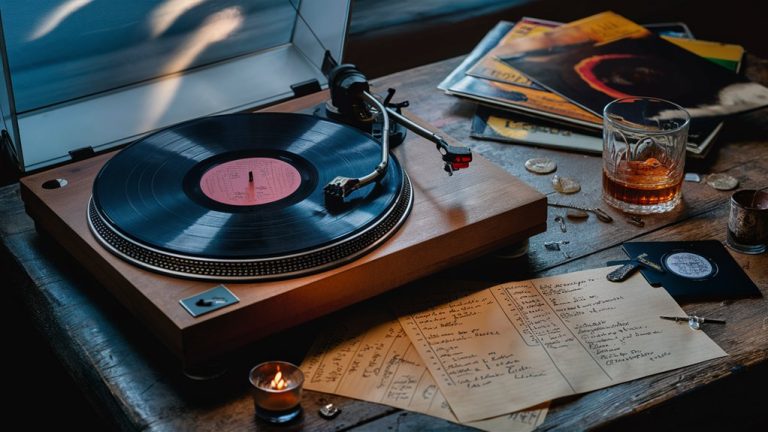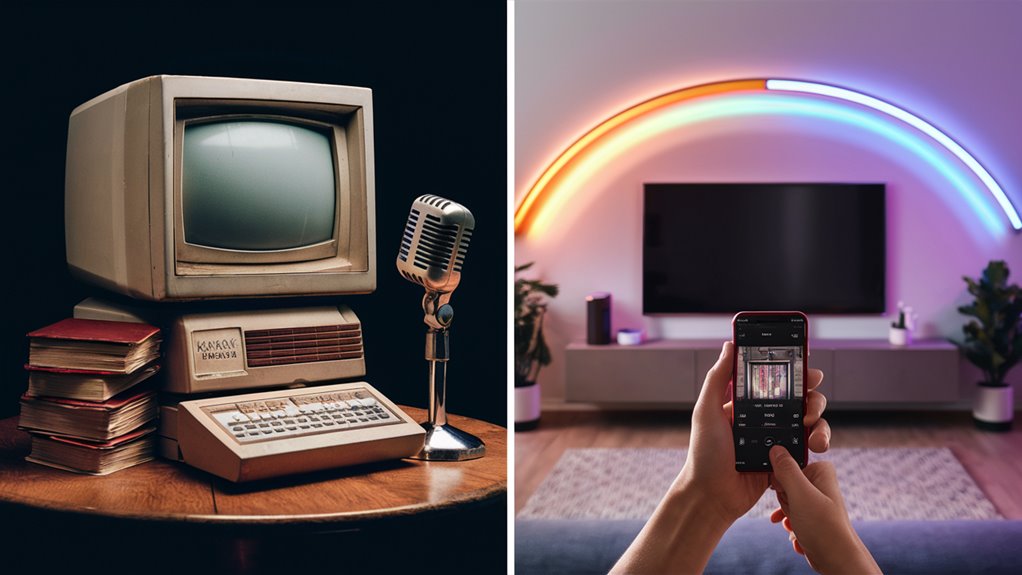
From Coin-Operated Machines to Digital Streaming: The Evolution of Karaoke Technology
The Journey of Karaoke Technology
The journey of karaoke technology has been truly remarkable. It’s spanned over five decades, from Daisuke Inoue’s groundbreaking invention in 1971 to today’s sophisticated digital platforms. The basic microphone-amplifier configuration of the original 8-Jukes machine created the prototype of karaoke experience, which laid the groundwork for all those that were to come.
Technological Milestones in Karaoke Development
1982 saw a major innovation with the introduction of karaoke systems using the LaserDisc format, which included on-screen lyrics display as a standard feature of singing. In the 1990s, the CD+G (CD+Graphics) format meant that high-quality professional karaoke began to entertain households all around the world. This format’s superior audio quality and synchronized lyrics established it as the industry standard for years to come.
Digital Revolution and Modern Karaoke
When digital karaoke platforms emerged, that meant MP3 storage capabilities introduced, as well as cloud-based streaming services. With smartphone integration through the likes of Smule app, this brought unprecedented opportunities for global music collaboration, linking singers across continents.
Today’s most advanced systems include:
- AI-powered pitch correction
- Virtual duet capabilities
- Cross-platform real-time content sharing
- Audio processing in real-time
Today’s karaoke streaming platforms meld social networking with performance technology, allowing singers to create, share, and co-create in ways never before possible. This technological evolution continues to affect how people throughout the world experience and engage in social singing.
The Birth of Modern Karaoke
The First Karaoke Machine
1971 saw Japanese inventor Daisuke Inoue revolutionize entertainment by creating the first modern karaoke machine in Kobe, Japan.
That invention, the groundbreaking 8-Juke, took a car stereo, coin machine, and microphone amplifier to meet the increasing demand for music at parties and get-togethers.
Commercial Development and Market Growth
The lack of a patent meant rapid commercial development throughout Japan of karaoke machines.
Clarion Corporation is one of the pioneers. They launched the revolutionary Karaoke 8 Series in 1976.
In the late 1970s, karaoke machines became commonplace in Japanese snack bars, hotels, and other entertainment establishments, starting a cultural phenomenon that was soon to sweep the nations of the world.
Development Through Technology and the Global Impact
The LaserDisc Revolution (1982)
Four years later, in 1982, LaserDisc karaoke systems were unveiled as the form in which karaoke would take its biggest leap forward yet on technology and presentation.
These advanced types of systems included lyrics onscreen and a much higher quality of sound – karaoke thus reached from mere audio playback into a more immersive form with an engaging visual aspect.
First Machines and Their Effect
By the end of the 1970s, these pioneer karaoke machines had set the stage for a new era of musical life. With its core elements—an eight-track tape player, the ability to take a microphone input, and a bare-bones audio mixer—Daisuke Inoue’s Juke-8 laid down sound design principles for subsequent generations of engineers.
Early karaoke systems of this type used printed songbooks to supply the lyrics, offering a basic but innovative form of entertainment.
The 1980s: Big Changes in Technology
The LaserDisc Revolution
In the early 1980s, LaserDisc dramatically changed karaoke technology.
Pioneer’s LaserKaraoke system represented a breakthrough at the time, in 1984. This media integrated audio tracks of high quality, together with onscreen text and elaborate scenery far beyond anything seen previously for performance purposes. Such technical progress set new standards in both how karaoke was staged and its graphic style.
Cultural Influence and Business Success
These technical revolutions sent karaoke throughout the entertainment sector in Asia.
As karaoke installations at commercial venues became standard, bars and restaurants underwent great change.
This change spawned a new genre of outlets for communal recreation or nightlife, representing a fundamental shift in the way people now go out after dark in different parts of Asia.
The Coming of Digital Formats
The CD+G Revolution (Mid-1990s)
When CD+G (Compact Disc + Graphics) technology replaced traditional LaserDisc systems on a wide scale in the mid-1990s, the karaoke industry underwent major upheavals.
CD+G changed all that, making it possible for karaoke enthusiasts to build extensive song libraries at a bargain price.
Professional quality audio joined by computer graphics brought the newest tinge of karaoke experience: CD+G.
Digital Age (Early 2000s)
Then came the advent of MP3 technology and another sea change in karaoke: hard-drive systems.
These new units boasted record storage capacity, housing thousands of songs on board with room to spare.
Digital storage also brought step-function improvements in usability: vast song books could be updated in no time at all, and searching became highly accurate.
The Current Streaming Era
The karaoke scene has been thoroughly reshaped by streaming technology.
Karaoke apps with a mobile platform then brought home-based karaoke into the Internet age. Smarter algorithms nowadays can execute functions like pitch correction and performance grading automatically for you.
Key digital features:
- Immediate song access through network platforms
- Performance analysis and grading systems
- Smartphone apps transform entertainment
The Evolution of Smartphone Karaoke Apps
The Mobile Music Revolution
From 2008, when mobile technology began taking over the musical entertainment environment, music using a handheld device has changed dramatically.
The pioneering platform Sing! by Smule turned smartphones into miniaturized though sophisticated karaoke rooms, with functions for correcting pitch, duet, and group singing.
Technical Innovation and Social Integration
From 2010-2015, mobile karaoke had been undergoing rapid changes in its platforms. Essential functions like professional recording facilities, a suite of social features, and comprehensive network tools were all incorporated in the new lightweight software.
Even competitive gaming elements, like the ones found in StarMaker and Karaoke Party, are now used. Platforms such as One-Hour Karaoke Session give rise to an entirely brand-new kind of short-form musical content generation.
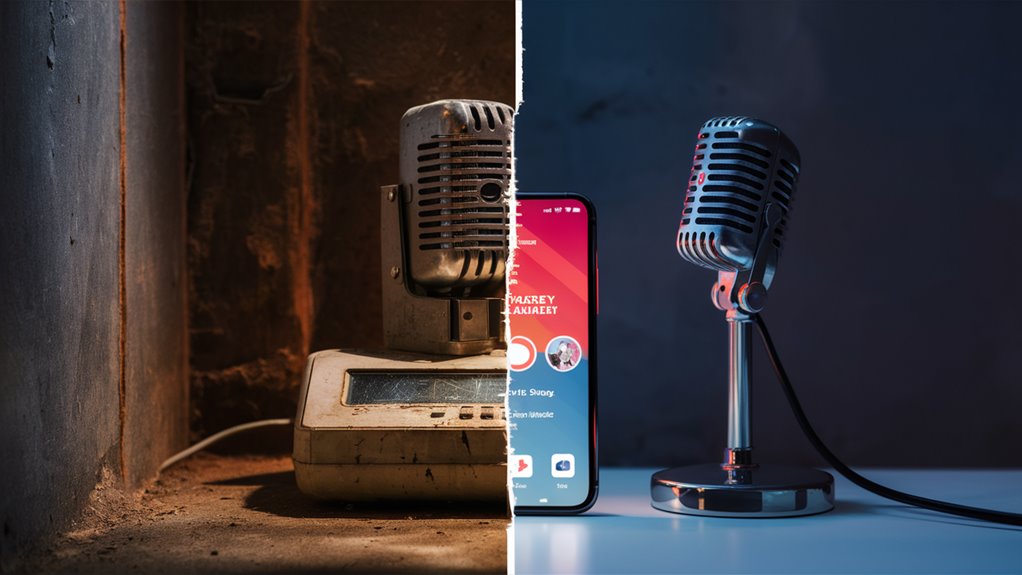
Cloud-Inspired Personal Entertainment
Cloud Technology Sets the Forefront of the Karaoke Revolution
Cloud computing fundamentally shook up the world of karaoke in 2012 with groundbreaking innovations like synchronizing lyrics while playing back on one device and vocal isolation technology.
Digital content delivery was reinvented by cloud-based karaoke systems, throwing off the yoke of physical media and allowing access to millions of songs at any time.
This innovation made high-quality instrumental streaming and real-time lyric display across all Internet-connected devices an object of convenience.
Business Revolution on the Cloud
Karaoke Cloud and KaraFun are leaders in the field using the cloud. They can accommodate any number of users simultaneously, delivering consistent levels of service and reliability alike across millions of individual cases.
Advanced Features and Interactive Experience
On modern karaoke platforms, the most distinctive features are powered by cloud computing technology:
- Real-time voice processing
- Automatic pitch correction
- Synchronization across platforms
- Virtual duet performance function
- Performance analysis
These benefits that cloud technology brings enable karaoke services to offer instant feedback on the voice and facilitate collaboration across long distances.
The Future Singing Platform with Social Characteristics
The Future of Singing: How Social Features Will Form It
The digitization of karaoke is changing the nature of the whole experience. With advanced social connectivity, people can now enjoy karaoke singing in ways never before possible.
New Karaoke Platforms Taking on Ever More Social Characteristics
Modern karaoke platforms now include:
- Cross-border “song partner” function
- “Instant commentary” function providing real-time feedback
- Virtual gifting systems for users
- Digital token/currency exchanges for performers
These systems have created an ecology of digital singing, where talent and creativity are rewarded.
Social Innovation and Competitive Development
Social singing platforms now include:
- Leaderboards for performances
- Weekly singing contests
- Seasonal championships
- AI-powered vocal matching
- Virtual karaoke rooms
This transformation has turned karaoke into an international singing community, where performers can connect, compete, and collaborate on integrated digital platforms.
